Review : Apple MacBook Pro 15.4-inch 2.16GHz
Review : Apple MacBook Pro 15.4-inch 2.16GHz
“The Intel-based MacBook Pro met or surpassed our expectations..”
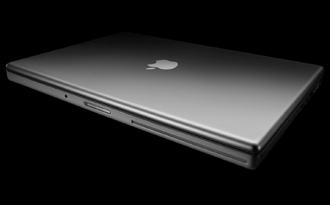
Introduction
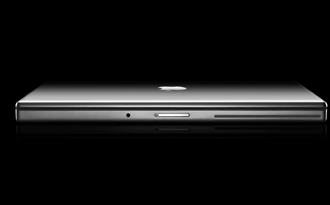
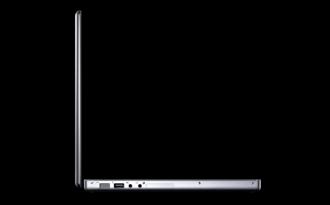
The new 15" Intel-based Mac Book Pro is a faithful and aggressive continuation of the record breaking and standard-setting PowerBook line of Apple laptops first introduced to the world in 1991. Externally, the MacBook Pro and the 2003-2006 PowerBook models are very similar - practically identical to the untrained eye. Internally, the MacBook pro is geared like a twin-turbo roadster that leaves the trusty PowerBook in the dust.
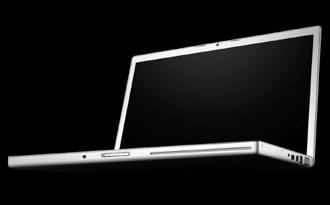
Features and Design
The MacBook Pro is the thinner, sexier, more energetic cousin to the PowerBook line. At 1" thin, 14.1" wide, 9.6" deep and only 5.6lbs, the MacBook Pro is lean and fit. The brushed aluminum casing is unique, aesthetic and unmistakable world-wide. Carrying a MacBook Pro is a sure conversation-starter.
Differentiating the physical characteristics of the 15" MacBook Pro from the 15" PowerBook involves noticing subtle differences. Apple removed the less popular Firewire 800 port, however there are still two USB 2.0 ports and one Firewire 400 port on the 15" MacBook Pro. The dial-up modem port has been given a 21st century adieu. (Reactionaries can pick up a USB dial-up modem from Apple if they must use old school connectivity.) On the MacBook Pro, the screen is much, much brighter. Gone is the PCMCIA (PC Card) slot. In its place is the newer, slimmer, faster ExpressCard/34. To date, very few ExpressCard/34 options are available to Mac users. Flash memory card readers were the first to appear. Of course, the quickest way to tell if you're looking at a MacBook Pro and not just a clean PowerBook is the tiny iSight camera built into the top frame of the MacBook Pro screen.
Apple gave the MacBook Pro a newer, slimmer 4X SuperDrive, whereas the recent PowerBook line came with 8X SuperDrives. Apple reported that the 4X SuperDrive was necessary due to space limitations, however the newest 17" MacBook Pro comes standard with an 8X SuperDrive. Unless the 8X SuperDrive takes up significantly more horizontal space, it should be offered in the 15" MacBook Pro. That said, the use of the slower 4X SuperDrive has created no negative effect on my work flow or my overall satisfaction with the MacBook Pro.
The MagSafe power connector is one of the best little innovations added to the MacBook Pro line. Standard power adapters on iBooks and PowerBooks (and most PC laptops) plug into the side of the laptop body and are intended to fit tightly so they do not fall out. The downside to this tight male-female fit is the fact that when someone inevitably trips over the power cord, the tip of the power cord and the connection on the logicboard can be damaged. Many laptops have been sent flying to the floor from tables, desks and counter tops. MagSafe successfully cures "Airborne Mac Syndrome" by using magnetic attraction and surface-to-surface electric conductivity - simple, yet brilliant. A small array of magnets holds the tip of the power adapter to the charging port on the MacBook Pro. While connected, electricity flows and charges the battery. Tripping over the power cord (or simply unplugging it from any angle) harmlessly disconnects the MagSafe from the MacBook Pro. No more Airborne Mac Syndrome, no more internal or external damage, no more tears.
One more obvious improvement on the MacBook Pro - the battery bay. A big 'thank you' goes out to the individual who designed away from the annoying and damage-prone, coin-slot-shaped eject unit and adorned the MacBook Pro with a simple and elegant two-thumb slide-eject battery bay. Two thumbs up!
The white plastic power-brick, cables and external video adapter still do not match the MacBook Pro's sexy silver body. I truly wish Apple would make motions to close this tiny, yet obvious cosmetic gap.
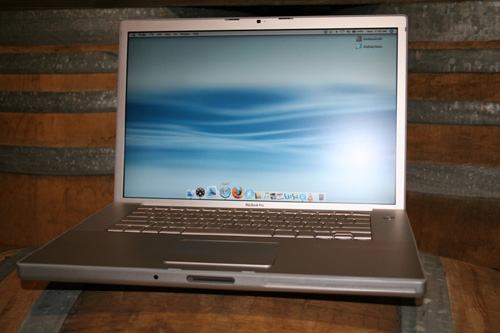
Setup and Use
Setting up the MacBook Pro is about as simple and care-free as any computer setup could be. Unpacking the ultra-thin and plasticized MacBook Pro box is completed in less than 30 seconds.
System as tested:
* 2.16GHz Intel Core Duo processor
* 1GB memory (667MHz DDR2 SDRAM)
* 100GB Serial ATA hard drive
* 15.4-inch widescreen display
* 1440x900 resolution
* ATI Mobility Radeon X1600 with 256MB GDDR3 memory
* Double-layer SuperDrive (DVD+R DL/DVD±RW/CD-RW)
* Built-in AirPort Extreme and Bluetooth 2.0
* Apple Remote
I set the MacBook Pro on a desk, plugged in the MagSafe power cord and prepared to time the overall setup of OSX. I used my new favorite timer and count-down app, Chimoo Timer.
Timer started and power button pressed, the 'select language' screen appeared in 1 minute 53 seconds. The OS X "Welcome, Bienvenue..." screen appeared at 2 mins 21 seconds. Wireless network password entered at 3 mins 15 seconds. My full name, address and other account information were entered by 4 mins 35 seconds. OS X was set up and running by the time 6 mins 05 seconds passed. By 7 mins and 08 seconds, I had Tiger's firewall set up, the Dock configured and software updates had been started.
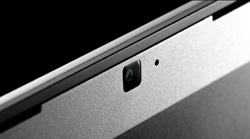
Unlike the Intel Mac Mini that took only 8 mins 36 seconds to perform updates, the MacBook Pro took exactly 13 minutes. This is understandable because the MacBook Pro has more hardware built into it than the Mini, and Apple had since released additional updates for Intel-based systems.
Once the updates were complete, and the system had rebooted, I began opening a few applications to test the system's responsiveness. iCal opened as if it was already running. iPhoto also opened very quickly - a little faster than on the Mac Mini and much faster than my loaded G5 iMac.
All Universal applications open very quickly, if not instantly, on the MacBook Pro. Adium - instant. iLife - near instant. iWork - less than 3 seconds.
Rosetta apps, however, take a little more time and a lot more patience. The worst of the pack was Photoshop CS2. Photoshop CS2 was installed with the exact same configurations and preferences on the MacBook Pro running OS X, on my 20" G5 iMac running OS X and on the MacBook Pro running Windows XP via Boot Camp. Each system was given a 2.1MB jpg file taken with a Canon Digital Rebel XT. Times are counted from first clicking the Photoshop icon, without Photoshop running previously.
Photoshop CS2 - Windows XP on MacBook Pro via Boot Camp
Photoshop loaded then opened the 2.1MB image in 10.6 seconds. The same image re-opened in 2.4 seconds.
Photoshop CS2 - OS X on G5 iMac
Photoshop loaded then opened the 2.1MB image in 22.7 seconds. The same image re-opened in 0.9 seconds.
Photoshop CS2 - OS X on MacBook Pro via Rosetta
Photoshop loaded then opened the 2.1MB image in 52.2 seconds. Ouch. The same image re-opened in 3.0 seconds.
It's painfully obvious that running non-Universal apps on the new Intel Macs is not the best experience for impatient people like me. Rosetta performs necessarily difficult translations in order to allow PowerPC-based apps to run on the Intel architecture, much like how VirtualPC allows Windows operating systems and programs to run under OS X on pre-Intel Macs. Some day all apps will be Universal and there will be peace on Earth.
MacBook Pro Acts Up
Shortly after testing Photoshop CS2 on the MacBook Pro, I downloaded a new software update from Apple - 10.4.6. After the update, the MacBook Pro seemed to reboot quicker than before. It also seemed to run cooler. I was pleased. I then opened Safari to continue research online. The MacBook Pro suddenly had no wireless connection. The wireless icon indicated full signal for my SSID, but there was no connection.
Better Battery
On a week-long business trip, I was able to work on my MacBook Pro during the course of several cross-country flights. With the screen brightness turned down half way and power settings changed to "Better Energy Savings", the MacBook Pro lasted over 4 hours and still had a little battery life to spare. This is an improvement over the battery life of my last-rev 15" PowerBook.
After thorough trouble shooting, I was able to get it connected once, but on subsequent reboots (or waking from sleep mode), the connection was just dead. I took it to the nearest Apple store and handed it over to several Genius Bar folks. They couldn't figure it out and said that without a WPA protected network to test it on, they could not replicate the problem. (Which begs to ask, 'Why isn't there a simple WPA or WEP protected network at the Genius Bar to test systems on?')
The next day, I performed a few Disk Utility functions. I got numerous errors and failure messages, and a disappointing request from Disk Utility to insert my original installation DVDs to run repair utilities. I fixed the volume errors with minimal effort, but as soon as I connected to another secure network, the password mess began happening again.
Another Apple tech thought something had been corrupted in the OS, and as I didn't want to spend the next week diagnosing annoyances, I decided on a reinstallation of OS X.
Reinstallation of OS X went smoothly. WPA wireless worked perfectly... until I downloaded 10.4.6 again; after which things went haywire. I looked at Apple's newest support threads and found some tips on fixing this problem. Half an hour later, the WPA issue had been corrected. No more volume errors, either.
Now that the MacBook Pro is running at top-health again, I am quite pleased with its performance and capabilities. Nothing runs particularly faster since the 10.4.6 issue was corrected, but the native running speed for applications on the MacBook Pro is wholly impressive and makes for a very satisfactory computing experience. Given Universal applications to run, the MacBook Pro is an absolute speed demon. The more RAM you feed it, the faster it goes.
Screen Test
The screen on the MacBook Pro is very bright and clean. In fact, at it's brightest setting, it is nearly as bright as the screen on my 20" G5 iMac. For any laptop, that's a very impressive feat. The 1400x900 screen resolution powered by a 256MB ATI Mobility Radeon X1600 video card is great for movies, iPhoto, webs browsing, games and plenty of other types of visual entertainment.
Additionally, DVD playback on the MacBook Pro is stunning. I found the darkest, most contrasted high-action movie I could - Underworld. Even in the fastest action sequences displayed full-screen, blacks were true black, flesh tones were very real and colors were vibrant. There were no visible artifacts during the most intense scenes. I wish I could report more, but it was flat-out excellent.
Conclusion
My impressions of the MacBook Pro are quite positive overall, even considering the troubles I encountered. The MacBook Pro is one of the most gorgeous laptops in the world. The design is unparalleled. Its brushed aluminum body and accents provide a sensual computing experience unlike PC alternatives. The screen is awesome - bright, crisp, clean, almost life-like. The keyboard feels smooth, yet solid. The OS and universal applications run very quickly thanks to a lengthy menu of cutting edge hardware and memory management improvements.
While the MacBook Pro has a long list of positive attributes, all of which make it a very worthy and highly recommended purchase, it has not been perfected by Apple yet. The troubles I experienced were frustrating but minor, and could rightly be blamed on the 10.4.6 update instead of the MacBook Pro hardware itself, but it is the overall computing experience that counts. Had the wireless issues and mysterious volume errors not occurred, I would have given the MacBook Pro a perfect score. (On a positive note, Apple is already aware of the 10.4.6 complaints and will likely take steps to ensure it never happens again.)
The Intel-based MacBook Pro met or surpassed my expectations. In many ways, it increased my level of expectation for future Apple products.
Pros
- Sexy design
- Light weight
- Silent operation
- Super-bright screen
- iSight camera built-in
- Ability to run OSX and Windows XP
Cons
- Aggravating wireless connection issues experienced
- Bleeding-edge technologies make little glitches possible
Source: digitaltrends